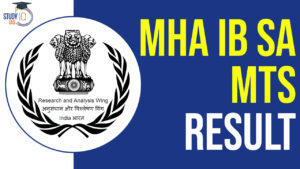Current Affairs 1st September 2023 for UPSC Prelims Exam
Liquid Apogee Motor Engine
Context: The successful operation of LAM, short for Liquid Apogee Motor, is vital to ISRO’s plans to place the Aditya spacecraft in Lagrangian point L1.
About the Liquid Apogee Motor Engine (LAM)
- The Liquid Apogee Motor (LAM) is a type of rocket engine used in space missions to adjust the orbit of a spacecraft.
- It is specifically designed to perform orbital insertion, orbit adjustments, and other manoeuvres that require changes in velocity.
- It is developed by the Liquid Propulsion Systems Centre (LPSC), the ISRO centre for liquid and cryogenic propulsion in Thiruvananthapuram.
- Propellants for the engine: mono-methyl hydrazine (MMH) and MON3 (MON, short for mixed oxides of nitrogen).

- Mechanism:
- The primary purpose of a LAM engine is to perform burns at the apogee (farthest point) of an orbit.
- By firing the LAM engine at this point, a spacecraft can achieve a higher energy state, which results in an alteration of its orbit.
- This is often used to raise or lower the spacecraft’s perigee (closest point) or apogee, allowing for changes in orbital altitude, inclination, or other parameters.
- Applications:
- LAM engines are commonly used in interplanetary missions, geostationary satellite deployments, and other scenarios where precise orbital adjustments are required.
- LAM has played an important role in missions, including the 2014 Mars Orbiter Mission (MOM) Mangalyaan and the more recent Chandrayaan-3.
About the Aditya L1 Mission
- Aditya L1 shall be the first space based Indian mission to study the Sun.
- It will observe the Sun from a close distance, and try to obtain information about its atmosphere and magnetic field.
Key features of the Mission
- It is a 400 kg-class satellite that will be launched using the PSLV in XL configuration to the L1 (first Lagrange point) orbit.
- Aditya-L1 is equipped with seven payloads to study the Sun’s corona, solar emissions, solar winds and flares, and Coronal Mass Ejections (CMEs).
- Many of the instruments of the mission are being manufactured indigenously.
What are Lagrange Points?

- Lagrange Points are positions in space where the gravitational forces of a two-body system (like the Sun and the Earth) produce enhanced regions of attraction and repulsion.
- These can be used by spacecraft to reduce fuel consumption needed to remain in position.
- L1 refers to Lagrange Point 1, one of five points in the orbital plane of the Earth-Sun system.
- The L1 point is about 1.5 million km from Earth, or about one-hundredth of the way to the Sun.
- The L1 point is home to the Solar and Heliospheric Observatory Satellite (SOHO), an international collaboration project of NASA and the European Space Agency (ESA).
Current Affairs 31st August 2023 for UPSC Prelims Exam
Global Research Alliance on Agricultural Greenhouse Gases
Context: The agricultural minister of New Zealand invited India to join the Global Research Alliance on Agricultural Greenhouse Gases.
About the Global Research Alliance on Agricultural Greenhouse Gases (GRA)
- The Global Research Alliance (GRA) was launched in December 2009.
- It is an alliance of 67 countries that collaborate to share research on the mitigation of climate change impacts on agriculture.
- The GRA aims to:
- reduce the emissions intensity of agricultural production systems.
- find more opportunities to increase the potential for soil carbon storage (sequestration).
- Members of the GRA aim to deepen and broaden mitigation research efforts across the agricultural sub-sectors of paddy rice, cropping, and livestock.
- The GRA also partners with key international and regional organisations responsible for the dissemination of knowledge to policy makers, the science community and farming leaders.
Border Roads Organisation (BRO)
Context:The National Green Tribunal has directed the Border Roads Organisation to plant at least 10,000 trees within a month in Uttarakhand as part of compensatory tree plantation to make up for hundreds of trees felled during construction of a road from Simli to Gwaldam.
About Border Roads Organisation (BRO)
- Definition: The Border Roads Organisation (BRO) is a road construction executive force in India that provides support to and is a part of the Indian Armed Forces.
- The BRO was formed on 7 May 1960.
- Officers and personnel from the General Reserve Engineer Force (GREF) form the parent cadre of the BRO.
- BRO is also staffed by Officers and Troops drawn from the Indian Army’s Corps of Engineers on extra regimental employment (on deputation).
- BRO is also included in the Order of Battle of the Armed Forces, ensuring their support at any time.
- Aim:
- It secures India’s borders and develop infrastructure in remote areas of the north and north-east states of the country.
- BRO is instrumental in significantly upgrading and building new India-China Border Roads.
- BRO has been active during the 1962 war, the conflicts with Pakistan in 1965 and 1971, and has also been active in anti-insurgency operations in Northeast.
- The BRO undertakes projects in India and friendly countries.
- These projects typically include developing roads, bridges, and airfields in hostile environments shunned by private enterprises, whether due to security concerns related to hostilities, or because of environmental challenges.
- The organisation motto is Shramena Sarvam Sadhyam (everything is achievable through hardwork).
- Head: The executive head of the BRO is the DGBR who holds the rank of Lieutenant General.
- Border Roads Development Board (BRDB): To ensure coordination and expeditious execution of projects, the Government of India set up the Border Roads Development Board (BRDB) with the Prime Minister as Chairman of the Board and Defence Minister as Deputy Chairman.
Sequencing Y Chromosome
Context: The Y chromosome bears genes that determine maleness and make sperm.
About Y Chromosome
- Definition: The Y chromosome is one of the two sex chromosomes that are involved in sex determination.
- Humans and most other mammals have two sex chromosomes (X and Y) that in combination determine the sex of an individual.
- Females have two X chromosomes in their cells, while males have one X and one Y.

- Features:
- The Y chromosome is one of the smallest chromosomes with the least number of genes of any chromosome.
- The Y chromosome spans more than 59 million building blocks of DNA (base pairs) and represents almost 2% of the total DNA in cells.
- About 66% of Y chromosome is composed of repetitive DNA which is difficult for researchers to study.
- Many genes are unique to the Y chromosome, but genes in areas known as pseudoautosomal regions are present on both sex chromosomes.
- As a result, men and women each have two functional copies of these genes.
- Many genes in the pseudoautosomal regions are essential for normal development.
- SRY Gene:
- The Y chromosome is male-determining because it bears a gene called SRY, which directs the development of a ridge of cells into a testis in the embryo.
- The embryonic testes make male hormones, and these hormones direct the development of male features in a baby boy.
- Without a Y chromosome and a SRY gene, the same ridge of cells develops into an ovary in XX embryos.
- Female hormones then direct the development of female features in the baby girl.
- The Y chromosome is male-determining because it bears a gene called SRY, which directs the development of a ridge of cells into a testis in the embryo.
- Sequencing Y Chromosome:
- The first draft of the human genome was completed in 1999. Since then, scientists have managed to sequence all the ordinary chromosomes, including the X, with just a few gaps.
- They’ve done this using short-read sequencing, which involves chopping the DNA into little bits of a hundred or so bases and reassembling them like a jigsaw.
- The Y is the last human chromosome to have been sequenced end-to-end, or T2T (telomere-to-telomere).
- After sequencing the Y chromosome, we will know the structure of the centromere ((a region of the chromosome that pulls copies apart when the cell divides) and have complete information about repetitive sequences in the Y.


 SSC Stenographer 2024 Notification Out a...
SSC Stenographer 2024 Notification Out a...
 IB SA MTS Final Result 2024 Out at mha.g...
IB SA MTS Final Result 2024 Out at mha.g...
 Model Skill Loan Scheme, Eligibility, Re...
Model Skill Loan Scheme, Eligibility, Re...

















